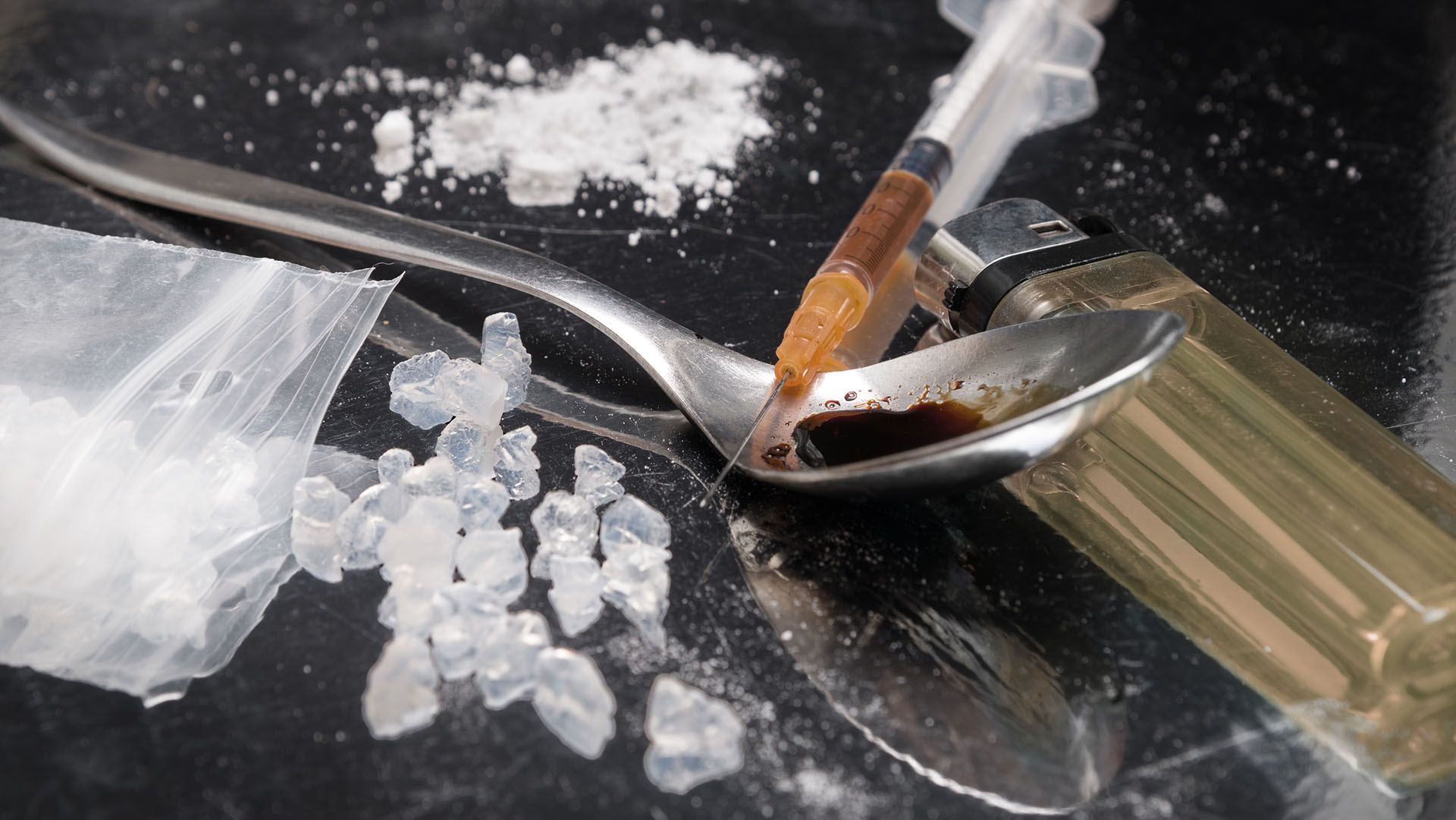Crystal Meth Addiction
Methamphetamine is a highly powerful, very addictive Schedule II stimulant substance that affects the central nervous system (CNS). Crystal methamphetamine (known as crystal meth, crank, chalk or ice) is a form of the drug that has a glass-rock type of look and carries an extremely high potential for abuse.
Crystal meth is an odourless, colourless form of methamphetamine and is classified as a synthetic psychostimulant that is most commonly smoked in glass pipes but can also be crushed and snorted, injected, or swallowed.
Understanding Crystal Meth
Methamphetamine is made from various forms of amphetamine and targets the central nervous system of the body. Crystal meth works by boosting the release and stopping the reuptake of the neurotransmitter dopamine, which plays a vital role in how the brain experiences and perceives pleasure.
Because of this, the user’s dopamine levels are vastly increased during use. It’s that elevated level of dopamine that is what users describe as the euphoric “high” that comes after using methamphetamine. Dopamine also has an effect on our motor function skills and the motivation/reward centers in our brains.
Continued use of crystal meth can cause a dopamine build-up, which can lead to permanent changes in your brain chemistry and bodily response to dopamine.
The History of Crystal Meth
Amphetamine was developed in 1887 in Germany, and by the early 1900s, methamphetamine (a more potent and easy-to-make substance) was developed in Japan.
During the second world war, soldiers used methamphetamine to stay awake. After the war, methamphetamine abuse by injection reached what was considered epidemic proportions because the supplies that were being saved for the war were then more available to the general public.
Methamphetamine was, at one point in the 1950s, prescribed as a diet aid, was often sought out for help with depression and was also used by many as a stimulant to stay awake for long hours.
In the 1970s, the United States government finally declared methamphetamine illegal. But of course, that didn’t stop the widespread abuse of methamphetamine, as motorcycle gangs and drug trafficking organizations became the primary sellers, setting up massive labs that could generate up to 50 lbs of the substance at a time.
Eventually, people who couldn’t find methamphetamine began to make it themselves in labs out of their own homes. However, making methamphetamine can be extremely dangerous because many of the chemicals used in this process are toxic and potentially explosive.
Crystal Meth Signs and Symptoms of Use
Based on a 2012 National Survey on Drug Use and Health report, about 1.2 million people had used methamphetamine in the previous year, with about 440,000 of them saying they had used it within the past 30 days.
After the initial euphoric high from crystal meth use, some of the following side effects can include:
- Increased wakefulness/physical activity
- Loss of appetite
- Increased breathing rate/heart rate and blood pressure
- Irregular heart rate
- Insomnia
- Seizures
- Irritability
- Hyperthermia (overheating of the body due to the rapid rise in blood pressure and heart rate)
A few of the more serious long-term side effects of methamphetamine addiction can include:
- Psychosis
- Anxiety
- Weak immune system
- Skin infections
- Heart complications
- “Meth mouth” (tooth decay, tooth loss, acid erosion, etc) caused by prolonged meth use
Do you think someone you know (a family friend, loved one or spouse) is using crystal meth? Identifying some of the key behavioural traits of someone who is addicted to crystal meth can be the first step towards a recovery journey for them.
Some of the most common behaviour indications that someone you love is abusing crystal methamphetamine can be things such as:
- Being very alert of physically active for short periods of time
- Reduced appetite and/or weight loss
- Poor hygiene
- Outbursts/mood swings, particularly when drug use is mentioned
- Paranoia or hallucinations
- High blood pressure
- Higher body temperature
- Shortness of breath
- Grinding their teeth
- Dilated pupils
- Tooth decay or gum problems
- Skin sores or irritated skin/rashes
- Exaggerated mannerisms or strange body movements
- Rapid eye movement
- Twitching, facial tics
- Constant talking, sometimes a nonsensical conversation
- Memory impairment, telling the same story multiple times on the same day
Tweaking is one of the biggest indicators of methamphetamine use.
This will occur towards the end of a drug binge when the person can’t maintain their high anymore and struggle to achieve the same feelings of euphoria. This often leads to intense cravings and a sense of desperation, anger, irritability, and depression.
Signs of tweaking can include:
- Self-harm, feelings of depression
- Strong cravings for methamphetamine
- Frustration, annoyance, paranoia
- Emotionally unstable behaviour
- Developing a psychotic state or seemingly being disconnected from reality
- Inability to sleep (sometimes for days)
- Hallucinations
Crystal Meth Timeline, Withdrawal and Overdose Symptoms
Methamphetamine has a half-life of around 10 hours, and withdrawal typically begins within the first 24 hours of the last use.
Withdrawal symptoms reach their peak within 7 days following your last use. Overall, withdrawal from crystal meth can last about 14-20 days, however, the cravings for the drug can persist for months or even years after your last use.
Crystal meth withdrawal can include symptoms such as:
- Fatigue
- Anxiety
- Depression (this can be severe)
- Intense cravings and urges to use crystal meth
- Psychosis
- Feelings of hopelessness
- Insomnia/inability to sleep, despite being exhausted
- Headache
- Muscle pain, grinding teeth
According to the University of Arizona’s Methamphetamine and Other Illicit Drug Education program (MethOIDE), most meth-related deaths happen when the user suffers from heat stroke brought on by too much of the drug, which ultimately results in multiple organs failing at the same time.
Methamphetamine overdoses, there are two ways this can happen: an acute overdose and a chronic overdose. An acute overdose happens when a person uses a large amount all at once, whereas a chronic overdose refers to the negative cumulative effects the person experiences from continued methamphetamine use.
Both acute and chronic methamphetamine overdoses can prove to be fatal.
Acute Crystal Meth Overdose Symptoms:
- Enlarged pupils
- Very rapid or very slowed heart rate
- Difficulty breathing
- Chest pains
- Cardiac arrest
- Stroke or seizure
- High body temperature and blood pressure
- Agitation, paranoia, hallucinations and/or delusions
- Stomach pain and/or kidney failure
Chronic Crystal Meth Overdose Symptoms:
- Anxiety
- Severe sleep disturbances/insomnia
- Extreme mood swings
- Violent outbursts
- Psychotic symptoms such as tactile hallucinations (for example feeling like bugs are crawling on the skin)
Coming back from a methamphetamine overdose is possible, depending on the amount taken and how quickly the person is able to receive medical assistance. If you suspect you or someone you know is presenting with any of these overdose signs, contact emergency services immediately.
Crystal Meth and Mental Health
The effects of continued crystal meth use on the brain are prominent and dangerous. Many people who struggle with an addiction aren’t able to think about the long-term effects their continued drug abuse can have on their mental health, lifestyle and relationships. However, it is increasingly clear that the continued use of crystal meth quite literally changes the chemical makeup of the user, forever changing the way they interact and conduct themselves in the world.
According to the National Institute on Drug Abuse (NIDA) used brain imaging studies on chronic methamphetamine users, the dopamine system actively changed in such a way that it seriously compromised the person’s verbal learning and motor skills as well as the areas of the brain that are linked to emotion and memory.
This can explain why many chronic crystal meth users experience emotional and cognitive difficulties and impairments. Many of these changes to the brain can be permanent, lasting long after the person has ended their use of crystal meth.
Some of the psychological effects that long-term use of crystal methamphetamine can include:
- Anxiety, irritability and/or aggressive/violent behaviours
- Alertness and short periods of increased concentration
- Hyperactivity accompanied by bouts of insomnia or restlessness
- Hallucinations and paranoia
- Repetitive, obsessive behaviours
- Delusions (often including feelings of high self-esteem, confidence, power, and invincibility)
- Psychosomatic disorders (where an apparent physical symptom is caused by a mental disturbance)
When taken over a long enough period of time or in high, frequent doses, crystal meth can cause a condition called “methamphetamine psychosis”, which is basically a drug-induced psychotic episode or break.
Effective Treatment Options for Crystal Meth Addiction
The best way to fully recover from a crystal meth addiction is to enter a detoxification facility, where you will be made comfortable and monitored until the drugs are completely out of your system. This is an important first step and medical assistance is suggested to withdraw from methamphetamine use, as the psychotic symptoms (such as paranoia, hallucinations, and delusions) can be dangerous and need to be treated in a professional environment to ensure your safety and overall health.
Once detoxed from the drug, you can choose to attend a treatment program of your choosing. Most treatment programs for crystal meth addiction follow the same kind of regime: detox, inpatient rehabilitation, and then an intensive outpatient rehabilitation followed by some sort of aftercare program.
Inpatient rehabilitation for crystal meth addiction is highly recommended, as it can be extremely difficult to quit on your own. With the support of cognitive behavioural therapy, group counselling sessions, 12-step programs, family and individual counselling as well as a community of peers who understand what you’re struggling with, you can end your addiction for good. Along with all of that, the benefit of entering an inpatient facility is that you begin to learn new routines and adopt healthier habits, forming a new kind of lifestyle that is less dependent on drug use.
Intensive outpatient rehabilitation is something you can enter into once you’ve completed your stay with an inpatient treatment center. Although this can be tailored to your needs, a typical intensive outpatient rehab program will continue the use of 12-step programs and group therapy but will mainly focus on giving you the tools you need to stay clean once the program ends.
Aftercare is the most critical part of the recovery process, in many ways. There is quite a lot of research that suggests individuals with methamphetamine use disorder (following short-term recovery) can exhibit some cognitive deficits in the areas of mental processing speed, memory, and planning. These problems are not yet resolved even 6 months after your last use.
This is why it is critical to understand that recovery from methamphetamine use (or any substance use) is a life-long journey. Your mind, body, and brain have changed in ways you might not even realize yet – and it may take a while to learn a new normal, but with the help of a supportive community and a tailored treatment plan, you will adjust.
Ending your use of crystal meth is admirable and very difficult, and recovery is a lifetime process. Ongoing counselling, participation in group therapies and attending 12-step programs can ensure you live a healthy, happy, drug-free life.










